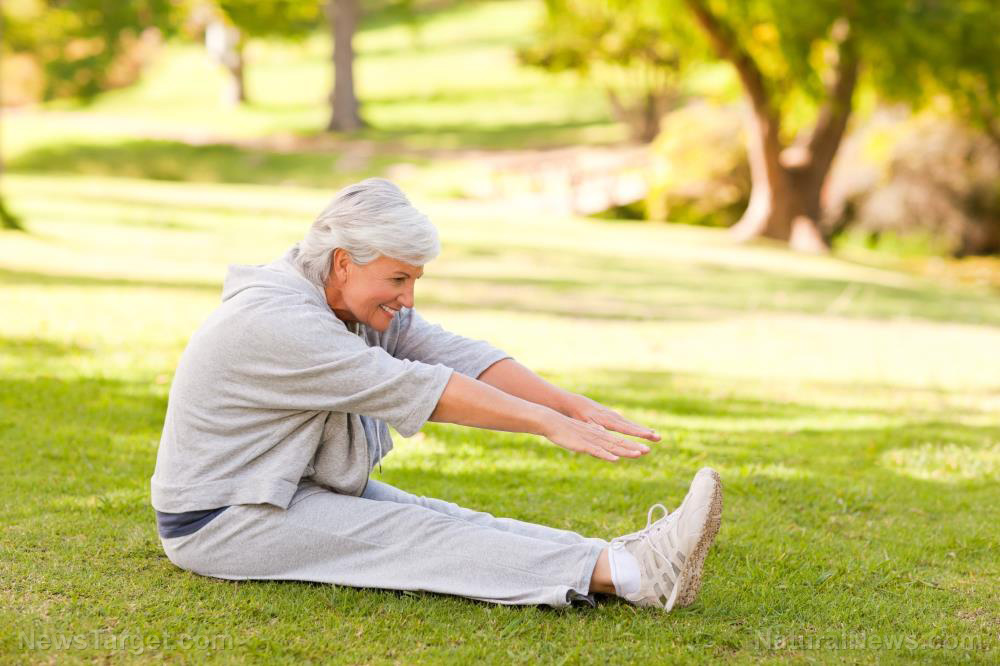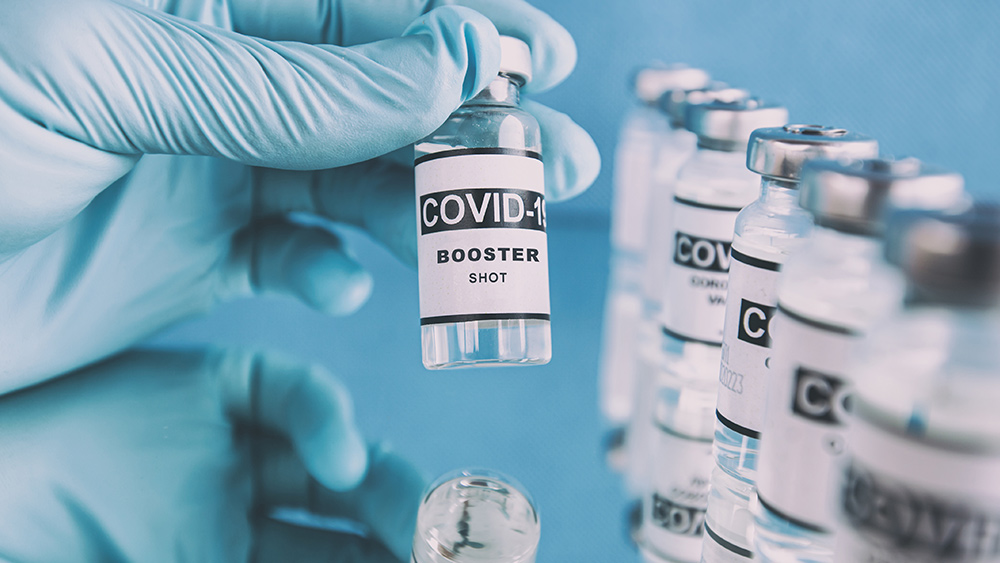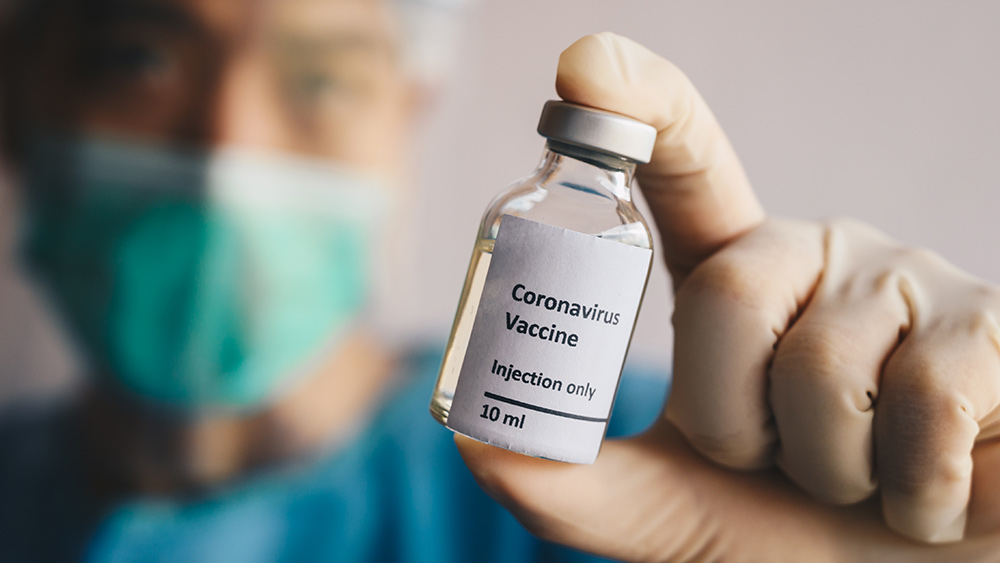When it comes to exercise, age is just a number – SHOCKING study shows that even the elderly can benefit from working out
08/29/2019 / By Zoey Sky

Exercising helps you maintain a healthy weight, which then prevents conditions linked to obesity such as heart disease. According to a recent study, even the elderly can benefit from physical activity, as long as they work out regularly.
The study was published in the journal JAMA Network Open.
Physical activity and mortality risk reduction
Dr. Pedro Saint-Maurice from the National Cancer Institute shared that based on the national guidelines for aerobic physical activity, adults need to have about 150 minutes of moderate intensity aerobic activity per week or 75 minutes of vigorous intensity activity weekly. Alternatively, adults can do an equivalent combination of both types of exercise.
Having levels of physical activity that meet this guideline is linked to significant health benefits, like lowering all-cause, cardiovascular disease-related, and cancer-related mortality.
Saint-Maurice added that most of the data on the benefits of physical activity are derived from studies that measure leisure-time physical activity (LTPA) at one point, usually during midlife.
Before the current study, no research has taken a life course approach to determine how participation in physical activity throughout the various stages of adulthood may be linked to mortality risk. Not much is known about how long-term participation in LTPA from adolescence to early adulthood and into middle age can affect mortality.
For the prospective cohort study, they used data from the National Institutes of Health–AARP (formerly American Association of Retired Persons) Diet and Health Study, which was established in 1995 to 1996.

Of the 315,000 participants, 58.2 percent were men. The volunteers were aged 50 to 71 at the time of enrollment. The study identified 10 trajectories of LTPA that were labeled based on the last endpoint for LTPA (ages 40 to 61) relative to the first LTPA endpoint (ages 15 to 18).
The researchers then grouped classified trajectories into three categories:
- The “maintainers,” or those who had consistently higher or stable LTPA over time. This group made up 56.1 percent of the total (176, 654 participants).
- The “increasers,” or those who had an increased LTPA from adolescence or later in adulthood. This group made up 13.1 percent of the total (41, 193 volunteers).
- The “decreasers,” or people who had patterns of higher early adulthood LTPA but reduced activity later in adulthood. This group made up 30.8 percent of the total (97,212 participants).
The researchers reported over 71,000 deaths among the volunteers at the end of the study. At least 22,219 deaths were because of cardiovascular disease while 16,388 deaths were due to cancer.
Saint-Maurice noted that, unlike adults who were consistently inactive, those with increased LTPA in adulthood after being inactive during adolescence had lower risks of all-cause and cause-specific mortality. (Related: Natural treatment for rheumatoid arthritis: Research shows yoga can relieve physical and psychological symptoms.)
The adults who started exercising later in life had similar mortality rates to lifelong exercisers. The researchers warned that most of the benefits of physical activity performed early in life, such as in adolescence or early adulthood, will be lost if you stop exercising.
The researchers initially thought that volunteers who maintained the highest levels of activity throughout adulthood would be at lowest risk, and they were surprised to discover that being more physically activity early or late in adulthood still offered similar health benefits. They added that the benefits are similar among men and women and are independent of changes in BMI over time.
The research team also found that being inactive across early adulthood but increasing LTPA later at 40 to 61 is linked to a 16 percent to 43 percent risk reduction in mortality. This is similar to the risk reduction associated with maintaining LTPA in all age groups from adolescence into adulthood.
Saint-Maurice said that the results are consistent with previous studies which show that being more physically active in midlife provides health benefits for reduced all-cause mortality.
He concluded that even the elderly can start exercising, especially if they want to improve their overall well-being.
If you’re not up for intense exercises, you can try other activities such as:
- Body-weight exercises
- Climbing stairs
- Stretching
- Swimming
- Tai chi
- Walking
- Yoga
The researchers hope that health care professionals, who advise people that have been physically inactive throughout most of their adulthood, use this knowledge to encourage them to make lifestyle changes. Whether you’re 16, 36, 0r 60 years old, exercising is good for your physical health.
Sources include:
Submit a correction >>
Tagged Under:
aging, aging secrets, alternative medicine, anti-aging, anti-aging science, anti-obesity, exercise, fightobesity, heart disease, heart health, leisure-time physical activity, longevity, LTPA, men's health, metabolic health, mortality, natural cures, natural health, natural medicine, obesity, old age, physical activity, physical inactivity, prevention, seniors' health, signs of aging, women's health
This article may contain statements that reflect the opinion of the author





















